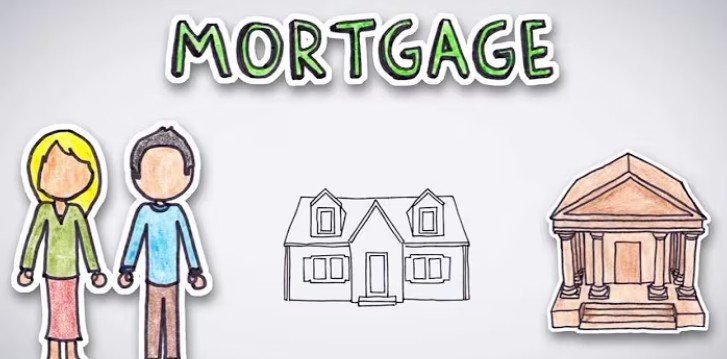Everything You Need to Know About Mortgages in England
Table of Contents
- Introduction to English Mortgages
- What Is an English Mortgage?
- Types of Mortgages in England
- Fixed-Rate Mortgages
- Variable-Rate Mortgages
- Tracker Mortgages
- Discounted Variable Rate Mortgages
- Offset Mortgages
- Interest-Only Mortgages
- Buy-to-Let Mortgages
- Shared Ownership Mortgages
- Government Schemes and Help-to-Buy Mortgages
- How Do Mortgages Work in England?
- Key Mortgage Terms and Concepts
- Eligibility Criteria for Mortgages in England
- How to Apply for a Mortgage in England
- The Mortgage Application Process
- How to Choose the Right Mortgage in England
- Factors That Influence Mortgage Rates in England
- The Importance of Credit Score in Mortgage Approval
- Mortgage Deposit and Loan-to-Value (LTV) Ratio
- First-Time Buyers and Mortgages in England
- Re-mortgaging in England
- The Risks of Taking Out a Mortgage in England
- Frequently Asked Questions About English Mortgages
- Final Thoughts
1. Introduction to English Mortgages
For anyone looking to buy a home in England, understanding mortgages is crucial. Mortgages form the backbone of home buying, allowing individuals and families to secure homes without paying the entire price upfront. Whether you’re a first-time buyer or looking to remortgage, knowing the options available to you can help you make the most informed decision.
In this guide, we will walk you through the types of mortgages, eligibility criteria, application processes, and the advantages and risks associated with each type. We’ll cover everything you need to know to make an informed choice when purchasing property in England.
2. What Is an English Mortgage?
An English mortgage is simply a type of home loan or real estate loan secured by the property being purchased. The lender (usually a bank or building society) provides the borrower with the necessary funds to purchase the property, and in return, the borrower agrees to pay the loan back, typically over a period of 25 to 30 years.
The mortgage is secured against the property, meaning if the borrower fails to repay the loan, the lender can repossess the property in order to recover the debt.
3. Types of Mortgages in England
There are several different types of mortgages available in England, each with its own benefits and drawbacks. Choosing the right type for you depends on your personal circumstances, financial situation, and your long-term goals. Below, we explore the most common types of mortgages available in England.
4. Fixed-Rate Mortgages
A fixed-rate mortgage is one where the interest rate remains the same for a set period, usually 2, 5, or 10 years. During this period, your monthly payments will remain consistent, offering financial stability and predictability.
Pros:
- Predictable monthly payments
- Protection from interest rate rises
- Easy to budget for the long term
Cons:
- Higher initial rates compared to variable-rate mortgages
- Potential to miss out on rate cuts if interest rates fall
- Early repayment fees if you decide to pay off the mortgage early
5. Variable-Rate Mortgages
A variable-rate mortgage (VRM) has an interest rate that can change, usually based on the lender’s Standard Variable Rate (SVR), which is linked to the Bank of England base rate or other external economic factors.
Pros:
- Initial rates can be lower than fixed-rate mortgages
- Possible savings if interest rates decrease
- Flexibility with payments
Cons:
- Monthly payments can increase if interest rates rise
- Less predictable than fixed-rate mortgages
6. Tracker Mortgages
A tracker mortgage is a type of variable mortgage that is directly linked to an external financial rate, such as the Bank of England base rate. The interest rate is generally set at a fixed margin above or below the base rate (e.g., base rate + 1%).
Pros:
- Can offer lower rates than SVRs
- More predictable than other variable-rate mortgages
- Will decrease if the base rate drops
Cons:
- Payments can increase if the base rate rises
- Less flexibility compared to a fixed-rate mortgage
7. Discounted Variable Rate Mortgages
A discounted variable rate mortgage (DVRM) is a form of variable-rate mortgage where the interest rate is discounted from the lender’s standard variable rate. The discount is usually available for a set period, often 2–5 years.
Pros:
- Lower initial interest rates compared to fixed-rate mortgages
- Potential savings if the SVR remains lower than expected
Cons:
- Rates can still increase if the lender raises the SVR
- The discount period is usually limited, after which the rate will revert to the full SVR
8. Offset Mortgages
An offset mortgage is a type of home loan that allows you to link your savings and current accounts to the mortgage. The balance in these accounts is offset against the loan, reducing the amount of interest you pay on the mortgage.
Pros:
- Can save you money on interest if you have substantial savings
- Flexibility to overpay or withdraw funds without penalties
- Potential to pay off your mortgage faster
Cons:
- Requires a larger savings balance for maximum benefit
- Interest rates can be higher than standard variable rates
9. Interest-Only Mortgages
An interest-only mortgage is where you only pay the interest on the loan, not the principal. The amount borrowed remains the same throughout the mortgage term, and you pay the principal at the end of the loan.
Pros:
- Lower monthly payments since you’re not paying down the loan principal
- Good option for short-term borrowers who plan to sell the property or have a repayment strategy in place
Cons:
- The full loan principal still needs to be paid off at the end of the term
- Higher risk of not being able to pay the loan off in full at the end
10. Buy-to-Let Mortgages
A buy-to-let mortgage is a loan for individuals looking to purchase property for renting out. These mortgages tend to have different criteria compared to standard home loans, such as higher deposits and interest rates.
Pros:
- Potential for rental income
- Allows for portfolio diversification
Cons:
- Requires a larger deposit (typically 25% or more)
- Risk of void periods where the property is not rented out
11. Shared Ownership Mortgages
Shared ownership mortgages are available to those who cannot afford to buy a property outright. They allow you to buy a share (usually 25%–75%) of the property and rent the rest from a housing association or private landlord.
Pros:
- Lower deposit requirements
- Opportunity to increase your share over time
Cons:
- Rent on the unpurchased share still needs to be paid
- You do not own the entire property outright until you buy the full share
12. Government Schemes and Help-to-Buy Mortgages
The UK government offers a range of schemes aimed at helping first-time buyers and those with low deposits. Some popular options include:
- Help to Buy (Equity Loan Scheme)
- Shared Ownership
- First Homes Scheme
- Lifetime ISA (for first-time buyers)
These schemes can provide financial assistance, often in the form of government loans or tax-free savings accounts.
13. How Do Mortgages Work in England?
When you apply for a mortgage in England, you borrow money from a lender to buy a property, which serves as collateral for the loan. You then repay the loan over a set period, typically 25–30 years, in monthly installments.
The amount you can borrow depends on several factors, including:
- Your income
- Your credit score
- Your deposit size
- Your monthly financial commitments
Lenders also use a stress test to determine whether you can afford the mortgage if interest rates rise.
14. Key Mortgage Terms and Concepts
- Loan-to-Value (LTV): The ratio of the loan amount to the property’s value. A higher LTV means a larger mortgage and often a higher interest rate.
- Annual Percentage Rate (APR): The overall cost of the mortgage, including fees and interest, expressed as a percentage.
- Early Repayment Charges (ERC): Fees charged if you pay off your mortgage early.
- Mortgage Term: The length of time you have to repay the loan, usually 25 years.
15. Eligibility Criteria for Mortgages in England
The basic eligibility criteria for a mortgage in England typically include:
- Minimum age of 18 (some lenders may require applicants to be older)
- A good credit score (typically 650 or higher)
- Stable income
- A sufficient deposit (typically 5%–20% of the property value)
Other factors, such as your employment status, the property’s location, and the lender’s internal policies, may also be taken into account.
16. How to Apply for a Mortgage in England
- Research: Compare different mortgage providers and find the best deal for you.
- Affordability Check: Assess how much you can afford to borrow, taking into account your income, debts, and outgoings.
- Pre-approval: Some lenders offer mortgage pre-approval, helping you know your budget before house-hunting.
- Application: Submit your mortgage application and provide the necessary documentation.
- Offer and Completion: If approved, the lender will make an offer, and after acceptance, the mortgage will complete.
17. The Mortgage Application Process
- Initial Consultation: Meet with a mortgage advisor or lender to discuss your options.
- Full Application: Submit all required documents, including proof of income, credit history, and identification.
- Valuation: The lender will arrange a valuation of the property.
- Offer: If successful, the lender will issue a mortgage offer.
- Completion: Sign the contract, and the funds will be released to complete the purchase.
18. How to Choose the Right Mortgage in England
When choosing a mortgage, consider factors such as:
- Interest rates: Fixed, variable, or tracker
- Lender fees: Application fees, arrangement fees, etc.
- Flexibility: Ability to make overpayments or early repayments
- Mortgage term: Shorter terms usually have higher monthly payments but less interest over time
19. Factors That Influence Mortgage Rates in England
Mortgage rates in England are influenced by:
- The Bank of England base rate
- Inflation
- Economic conditions
- Lender competition
- Credit score
20. The Importance of Credit Score in Mortgage Approval
A strong credit score increases your chances of mortgage approval and helps you secure lower interest rates. Lenders use your credit report to assess your reliability in repaying loans.
21. Mortgage Deposit and Loan-to-Value (LTV) Ratio
The deposit is the amount you pay upfront when buying a home, usually a percentage of the property price. The Loan-to-Value (LTV) ratio is the loan amount divided by the property’s value. A higher deposit reduces the LTV, which often leads to better mortgage rates.
22. First-Time Buyers and Mortgages in England
First-time buyers can take advantage of government schemes like Help to Buy and Lifetime ISAs to make homeownership more accessible. The deposit requirement may be lower, and some lenders offer special first-time buyer deals.
23. Re-mortgaging in England
Re-mortgaging involves switching your existing mortgage to a new deal, either with the same lender or a new one. This can help you secure a better interest rate, consolidate debt, or release equity.
24. The Risks of Taking Out a Mortgage in England
The risks of a mortgage include:
- Interest rate hikes
- Financial instability
- Repossession if payments are not made
It’s crucial to ensure that you can afford your mortgage in both good and bad economic conditions.
25. Frequently Asked Questions About English Mortgages
Q: Can I get a mortgage with a 5% deposit?
A: Yes, but it may come with higher interest rates.
Q: How do I know what mortgage I can afford?
A: Use a mortgage calculator or consult a financial advisor.
26. Final Thoughts
English mortgages offer a variety of options to suit different homebuyers, from first-time buyers to seasoned investors. By understanding the types of mortgages, eligibility criteria, and the application process, you can make informed decisions that help you achieve your homeownership goals. Always compare mortgage deals, and consider seeking advice from mortgage brokers or advisors to ensure you choose the best mortgage for your needs.







